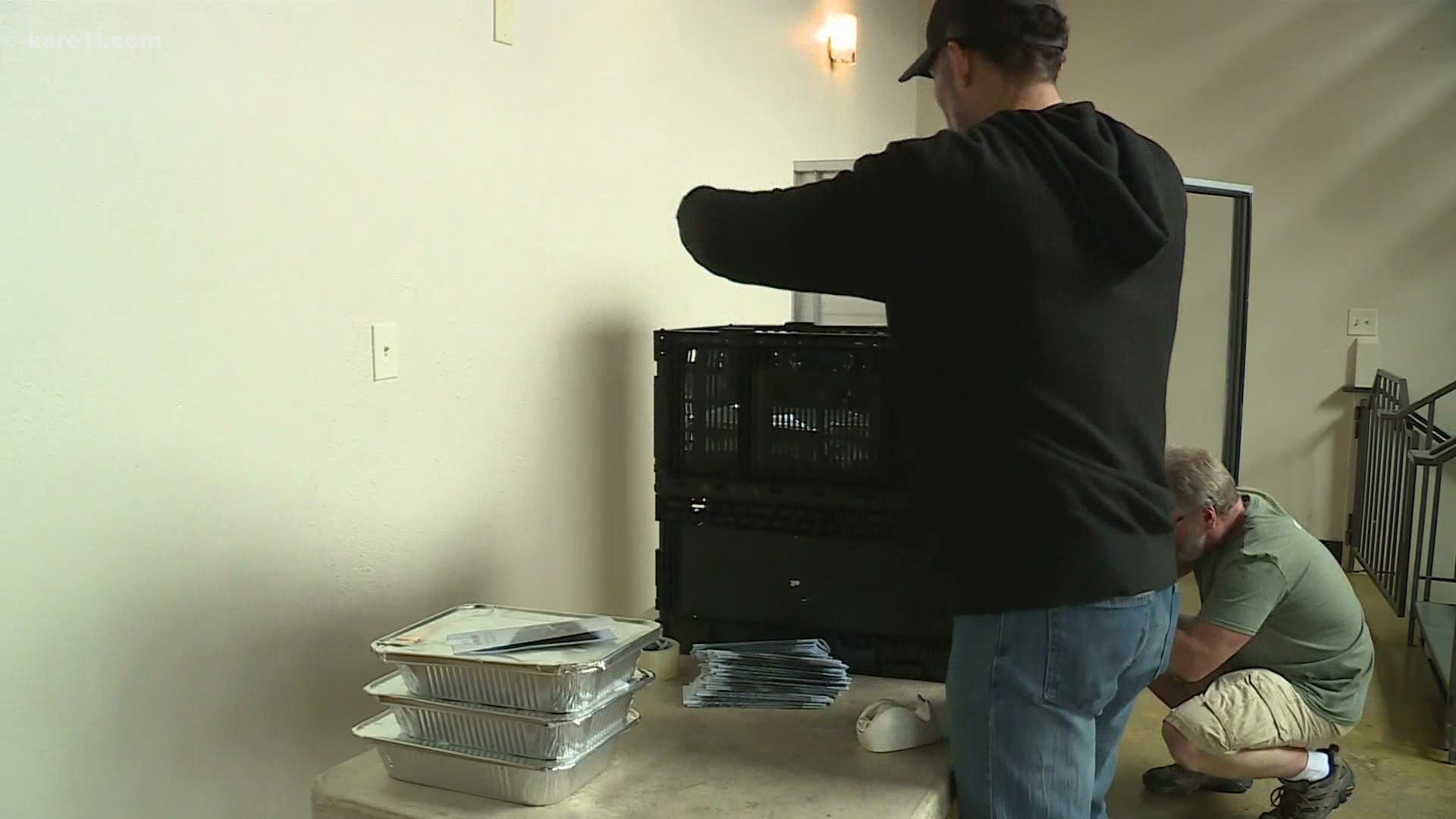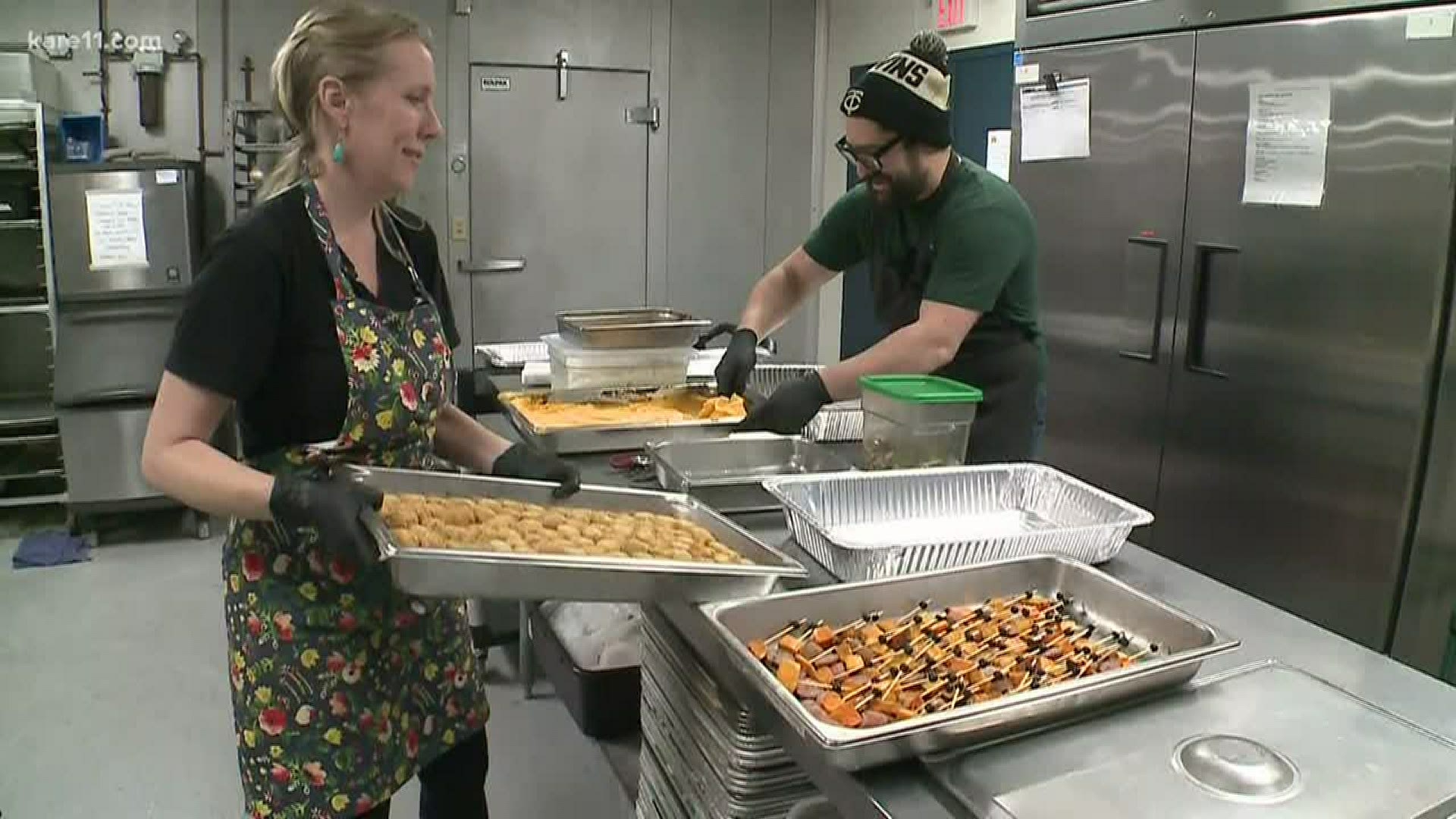MINNEAPOLIS, Minnesota — Food banks and food shelves in Minnesota have already seen an increase in demand since the COVID-19 pandemic started. But that demand is expected to grow even more during the late summer and into the fall.
"This is going to be a prolonged crisis, very likely over the next 18 months," said Allison O'Toole, CEO of Second Harvest Heartland—one of the largest food banks in the nation.
Before the COVID-19 pandemic, 1 in 11 Minnesotans struggled to afford food. By next month, it's expected that 1 in 8 will face hunger, according to data McKinsey & Co. collected on behalf of Second Harvest Heartland.
They predict an additional 275,000 Minnesotans, including 112,000 kids, will face food insecurity in the upcoming weeks and months.
"We're seeing a surge in hunger unlike anything we've seen since the Great Depression," O'Toole said. "That means families are watering down milk, that means moms are skipping dinner so their kids can have a little more and that means when school starts again—no matter if it's online or hybrid or in-person—kids are going to school hungry and we know that hungry kids can't learn."
Second Harvest Heartland is already moving more food than ever before.
"We are in the highest gear we know," O'Toole said.
Loaves & Fishes Minnesota served 1.3 million meals in 2019. So far in 2020, the nonprofit has already surpassed 2 million meals. Executive Director Cathy Maes said they're slated to hit 3.5 million to 4 million meals by December 31. Maes said they're also seeing a lot of new faces.
"We've seen triple, if not quadruple, numbers of people needing food. We used to serve around 3,500 meals a day and today we'll probably serve 12,000 meals," Maes said. "I expect that this will not level off until November, December, January. We'll just continue to see an increased spike."
Loaves & Fishes is in need of volunteers and financial support. You can find more information, here.
Food shelves and food banks across the state are expecting a 65% increase in demand through the remainder of 2020 and into 2021. Second Harvest Heartland is expecting a 70% increase in demand.
"We're definitely seeing increased food needs but I think we're also bracing for the real increase to come and I think that feels like the unpredictable piece right now," said Sophia Lenarz-Coy, executive director of The Food Group.
The Food Group is in need of volunteers and monetary donations. You can find more information, here.
RELATED: $600 unemployment benefit to end this week, here's how it will impact the Minnesota economy
Lenarz-Coy said The Food Group expects to see an even greater demand come August. The extra $600 in weekly federal unemployment benefits is set to end this month.
O'Toole agreed, saying, "Without those benefits, so many more individuals are going to face food insecurity. We know that the food budget is the first to get cut always when families are trying to make ends meet and without those extra benefits right now we are just going to see growing desperation among our neighbors."
O'Toole said they are most in need of financial donations. You can find more information, here.
Those in need of help can find food shelves near them, here.
"You can make it okay to ask for help. Hunger is going to be closer than it's ever been to so many of us," O'Toole said.
Families also still have time to apply for additional food assistance benefits to help feed their kids this summer. Eligible families have until July 31 to apply for Pandemic-Electronic Benefit Transfer, also referred to as P-EBT. You can find more information, here.
Lenarz-Coy said during the last recession, the charitable food system almost doubled, adding, "I don't think that's a sustainable path forward. So the more that we can think about bigger-picture policy solutions to get people the food, jobs and wages that they need, the more sustainable this all becomes."


